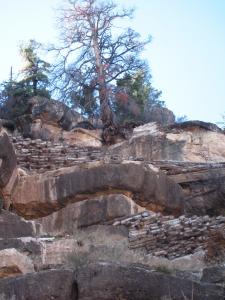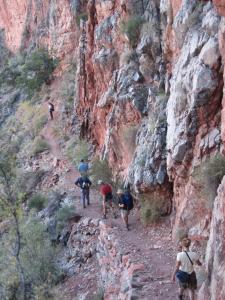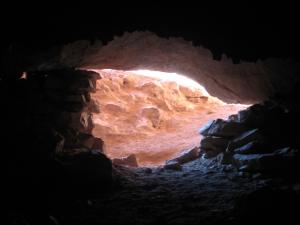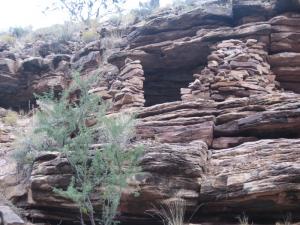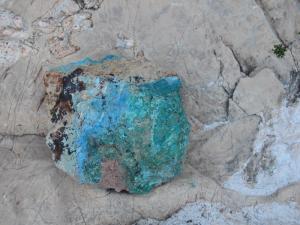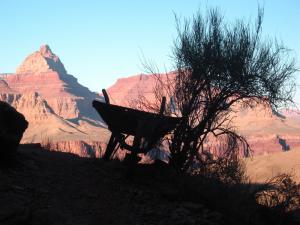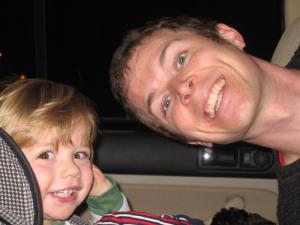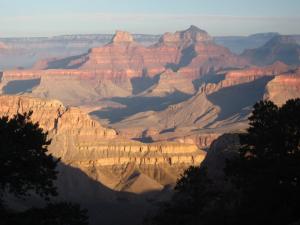 As Sylvan and I biked to the library this morning, I considered my appreciation and awe of this amazing time-travel thing we do when we fly in airplanes. Yesterday, at precisely the time I was biking to the library this morning in Eugene, 9:45 a.m., I had climbed 1500 feet toward the south rim of the Grand Canyon. I’d started at a campsite on Horseshoe Mesa, and, in another 1000 feet, I’d reach the rim.
As Sylvan and I biked to the library this morning, I considered my appreciation and awe of this amazing time-travel thing we do when we fly in airplanes. Yesterday, at precisely the time I was biking to the library this morning in Eugene, 9:45 a.m., I had climbed 1500 feet toward the south rim of the Grand Canyon. I’d started at a campsite on Horseshoe Mesa, and, in another 1000 feet, I’d reach the rim.
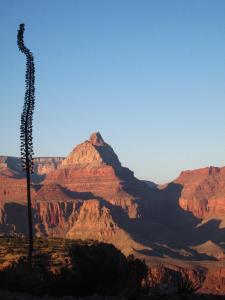 Two and a half weeks ago, I was given the opportunity to take a Leave No Trace Master Educator Course in the Grand Canyon. Although already an LNT Master (not to be confused with my position as the Master of Science), I’d like to instruct these courses, which are typically five days long, plus a couple of contract days before and after for planning and wrapping up — an ideal length for a Mom. In order to instruct these courses, NOLS instructors typically take one in order to see how it’s run. A position opened up on this course a couple of weeks ago, and I got a chance to see the Grand Canyon.
Two and a half weeks ago, I was given the opportunity to take a Leave No Trace Master Educator Course in the Grand Canyon. Although already an LNT Master (not to be confused with my position as the Master of Science), I’d like to instruct these courses, which are typically five days long, plus a couple of contract days before and after for planning and wrapping up — an ideal length for a Mom. In order to instruct these courses, NOLS instructors typically take one in order to see how it’s run. A position opened up on this course a couple of weeks ago, and I got a chance to see the Grand Canyon.
The Grand Canyon surprised me with its narrow 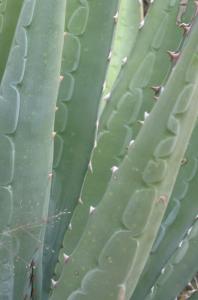 width. I’d envisioned a web of canyons, but the Grand Canyon is, of course, simply the Colorado River’s valley with some impressively eroded side channels running up to the rims. It’s only 12 miles across from the North to the South Rim. That doesn’t make it any less impressive when you come upon it and peer in, but it does make it a little more manageable. I felt like I could have easily made it down to the river and back in two days. I like how walking gives me that feeling of power, that I’d be able to walk down to the mythical Colorado River in just a day.
width. I’d envisioned a web of canyons, but the Grand Canyon is, of course, simply the Colorado River’s valley with some impressively eroded side channels running up to the rims. It’s only 12 miles across from the North to the South Rim. That doesn’t make it any less impressive when you come upon it and peer in, but it does make it a little more manageable. I felt like I could have easily made it down to the river and back in two days. I like how walking gives me that feeling of power, that I’d be able to walk down to the mythical Colorado River in just a day.
If you’ve hiked in the Grand Canyon, you’re familiar with trails in improbable locations, like hanging from the side of cliffs. The Park actually has a Trails Historian who, among other things, makes sure that trail maintenance is performed with materials and in a manner similar to those used during the trail’s construction — or at least during its maintenance in the past 200 years. Some Grand Canyon trails may have their origins thousands of years ago, when hunter-gathering cultures lived in the area that’s now Grand Canyon National Park.
We did some minor spelunking in the Cave of the Domes, in the Redwall limestone layer underneath Horseshoe Mesa. I took this photo looking toward the bright sunlight from within the cave’s lobby. Just minutes before, Air Force One had flown over; I don’t know any other aircraft with such an entourage.
The Grand Canyon’s human history extends back 10,000 years, and there’s plenty of evidence of the humans who have lived and worked there for the past 500 years. This cave dwelling is down in Cottonwood Canyon, on the west side of Horseshoe Mesa.
Horseshoe Mesa was a copper-mining hotbed in the late 1800s, at least until the realization was reached that getting ore, even remarkably high-grade ore, out of the Grand Canyon and then to any sort of population center was not cost-effective. Following are photographs of the remnants of that copper industry.
Stone cabin on Horseshoe Mesa, with Horseshoe Mesa Butte behind. The miner Pete Berry’s cabin?
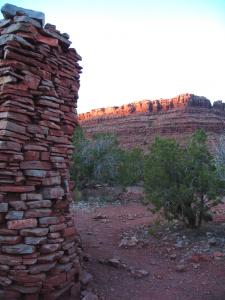
Copper ore. Maybe azurite (blue) and malachite (green). What am I, a geologist?
Wheelbarrow left to stay until it rusts away, near Page Spring.
And, if you were wondering, yes, I could quite possibly have the best husband around, one who not only understands what makes his wife tick (getting away to hike) but works hard to keep her ticking merrily away. This was my last view of the boys when they dropped me off at the airport last week.
